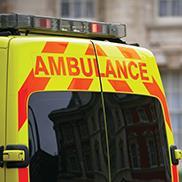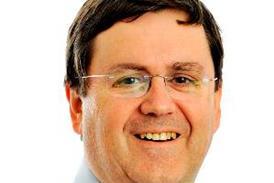Staffing is the issue keeping NHS leaders awake at night – and which consumes two-thirds of trusts’ spending. The fortnightly The Ward Round newsletter, by HSJ workforce correspondent Annabelle Collins, will make sure you are tuned in to the daily pressures on staff, and the wider trends and policies shaping the workforce. Contact me in confidence.
The link between the quality of training experienced by junior doctors and patient safety is well-established, as is the impact poor supervision can have on burn-out. With more doctors than ever before taking breaks between training, it has never been more important to give doctors a good experience while in training and boost the retention of the medical workforce.
As part of its ongoing work on its Enhancing Junior Doctors Working Lives programme, Health Education England reported concerns coming in fast and thick from doctors in training and trainees that the quality of supervision is inconsistent. It found a lack of clarity around improving supervision, and confusion as to who held responsibility for implementing it in the first place.
Of course, this confusion is bad for doctors – and bad for patients, as rota gaps have a serious impact on clinical services. A seminal literature review published in 2001 found clinical supervision was the “least investigated, discussed and developed” aspect of clinical education and most guidance documents failed to define what it actually was. It also found the need for models of effective supervision to be developed, as some attitudes towards supervision could be “detrimental both to patient care and learning”.
HEE has this week sought to remove some of the confusion and inconsistency experienced by doctors and their educational and clinical trainers by publishing detailed guidance. It is aimed at those providing and receiving workplace supervision and directors of medical education who are overseeing supervision within a trust.
For the first time, HEE has defined the role of “workplace supervision”, which could be anyone competent within the multiprofessional team – for example, a prescribing pharmacist, a senior nurse or another junior doctor. HEE said it hoped this would “lighten the load” on other supervisors and enhance support for multiprofessional working, which is currently unrecognised.
It has also made clear the onus is on employers to provide education supervisors with enough time – 0.25 programmed activities per week – to dedicate to the trainee they support.
This piece of work has raised many more important questions around supervision, some of which were asked by HEE board members, who wanted to know about plans to roll out guidance to other professional groups. In response, HEE’s director of quality and education Wendy Reid said this would be the next task, along with looking at how unregulated professions within a healthcare setting should be supervised.
When HSJ approached doctors at the grassroots level for their thoughts, they broadly welcomed the proposals because of the ongoing confusion in this area. However, they described some of the plans as “unrealistic” – for example, asking senior registrars to supervise more junior doctors as, although many would love to take on the role, they simply don’t have the time to deliver supervision. It’s clearly an overstretched system and far from an ideal environment to give those who want to supervise the opportunity to do so.
Another interesting point raised at HEE’s board meeting was the support available for consultants, who fulfil most of the supervisory roles. Professor Reid confirmed NHS England medical director for clinical effectiveness Celia Ingham Clark was putting together a new consultant’s programme of support.
Considering the very real concerns about the impact pensions tax charges is having on consultants, doctors have also suggested this could lead to a shortfall of supervisors in the future, which would hinder efforts to improve standards of supervision. Far from ideal considering the increased number of foundation trainees soon to enter the system.
Flexibility is the word
Another element HEE discussed, and also part of the enhancing junior doctors working lives programme, is the growing need to offer flexible working in the NHS, which HEE chair David Behan highlighted as the “key phrase” in the piece of work.
The evaluation of the emergency medicine less than full time pilot found trainees reported better job satisfaction, while the participants were more likely to stay in emergency medicine. HEE announced plans to expand this pilot to other specialties, including paediatrics and obstetrics and gynaecology, over the coming year.
Could this be the future for medical training? One trainee on the pilot said they felt it had a “knock on effect leading to improved patient care” and in the “current climate” they couldn’t envisage working in any other fashion. However, a fair point also raised on Twitter was that something is “seriously wrong” with a training scheme if those in it need to go part-time to maintain their quality of life.


























3 Readers' comments